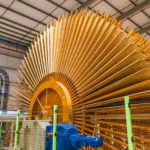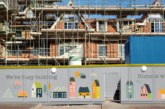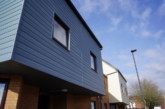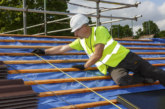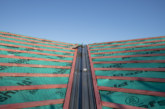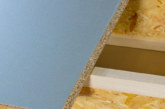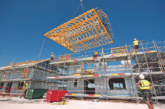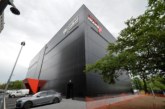With environmental impact a key concern for developers, West Fraser outlines how its SterlingOSB Zero can help housebuilders meet emissions targets.
OSB, or Oriented Strand Board to give it its full name, is often used as a substitute for chipboard and plywood in applications such as flooring, roofing and timber framing. There is good reason for this: OSB is versatile, easy to use and has high consistency and board strength. SterlingOSB Zero or ‘Sterling Board’, as it is often known, is a widely used and trusted structural panel.
In simple terms, OSB is formed of flakes or strands of timber bonded with resin adhesives in some 50 cross-directional layers. These are then mechanically pressed to create a structurally engineered board.
Resins used to bind the flakes of SterlingOSB Zero contain zero-added formaldehyde. With less resin and more wood, the boards are more environmentally friendly and safer while performance is unimpaired.
Carbon negative
The other important way that West Fraser’s SterlingOSB Zero can help specifiers and builders towards their environmental targets is that the boards do not contribute to climate change; they are certified carbon negative.
In-depth life-cycle assessment of carbon emissions in buildings is increasingly resulting in the building sector being advised to design and build with wood. As wood naturally absorbs carbon as part of its natural life cycle, it is an ideal replacement for other materials with high levels of embodied carbon.
The UK government has pledged to be carbon neutral by 2050. This target will require the UK to bring all greenhouse gas emissions down to net zero. SterlingOSB Zero products can help the construction industry comply; the net carbon negative status of the boards can be used by building designers to off-set the operational emissions of a building.
Long term storage
Every SterlingOSB Zero board removes more carbon from the atmosphere than is emitted during manufacture, locking it up into long term storage within the board. Per cubic metre, SterlingOSB Zero sequesters 828kg of CO2e. The wood used is homegrown, minimising carbon emissions from transport while ensuring it is always available and offers a cost-effective building solution.

